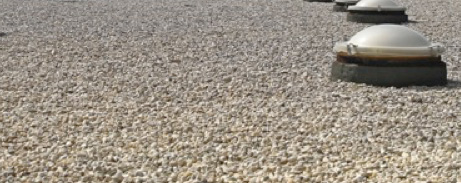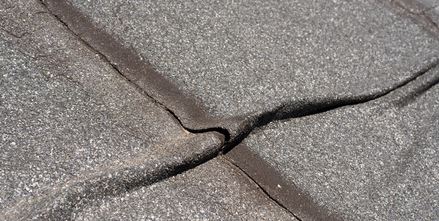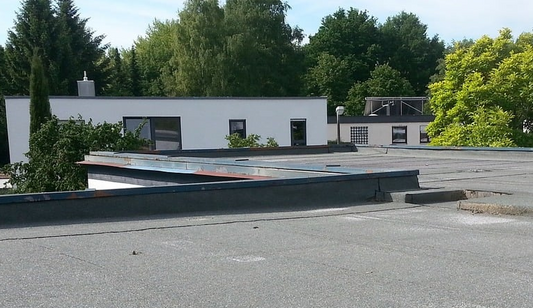Liquid applied waterproofing - we take a look at the most frequently asked questions on the subject.
What are the benefits of using liquid waterproofing on a roof compared to other methods?
When it comes to protecting your roof from the elements, you have several options to choose from. However, liquid waterproofing stands out from the rest due to its numerous benefits.
For one, it's a cost-effective solution compared to traditional methods like sheet membranes. You'll save money on labor costs since liquid waterproofing is relatively easy to apply, and it can be done quickly, minimizing downtime.
Another advantage of liquid waterproofing is its flexibility. It can be applied to complex roof designs and shapes, making it an ideal solution for unique architectural features.
Additionally, liquid waterproofing is a seamless system, eliminating the risk of leaks and water damage associated with traditional methods. It's also a great option for roofs with multiple penetrations, such as vents, skylights, and HVAC units.
Moreover, liquid waterproofing is a sustainable solution, as it can be reapplied or recoated, extending the life of your roof. Overall, liquid waterproofing offers a durable, flexible, and cost-effective solution for protecting your roof from the elements.
What types of roofs can liquid waterproofing be applied to?
Your roof type doesn't have to limit your waterproofing options. Liquid applied waterproofing can be applied to a wide range of roof types, including flat roofs, pitched roofs, and even green roofs.
Whether you have a concrete, metal, or asphalt roof, liquid waterproofing for roofs can provide a seamless and durable barrier against water ingress.
You can apply liquid waterproofing to new or existing roofs, and it's particularly useful for roofs with complex geometries or multiple penetrations.
It's also suitable for roofs with limited access or those that require a high level of flexibility, such as roofs with solar panels or HVAC equipment.
Additionally, liquid waterproofing can be applied to roofs with existing waterproofing systems, providing an additional layer of protection and extending the lifespan of the roof.
Some common roof types that benefit from liquid waterproofing include concrete roofs, metal roofs, asphalt roofs, and bituminous roofs.
It's also commonly used on roofs with multiple layers or those with a high risk of water damage, such as roofs with skylights or roof gardens.
How long does a liquid waterproofing membrane typically last?
A well-installed liquid waterproofing membrane can last anywhere from 10 to 25 years, depending on various factors such as the type of membrane, environmental conditions, and maintenance.
You'll need to ponder the specific conditions of your building, including exposure to UV radiation, temperature fluctuations, and foot traffic. If you're applying the membrane to a roof with heavy foot traffic, you can expect a shorter lifespan.
Regular maintenance is vital to extending the life of your liquid waterproofing membrane.
You'll need to inspect the membrane regularly for signs of damage or wear, and perform repairs promptly. This includes checking for cracks, blisters, and delamination.
You should also verify that the membrane is properly sealed around any penetrations, such as vents or skylights.
The type of membrane you choose will also impact its lifespan.Some membranes are designed to last longer than others, so be sure to choose a high-quality membrane that meets your specific needs.
Is liquid waterproofing suitable for both new construction and refurbishment projects?
Liquid waterproofing membranes can be applied to both new construction and refurbishment projects, offering a versatile solution for builders and property owners.
You can use liquid waterproofing to protect new buildings from water damage, guaranteeing a strong foundation from the start.
It's also an excellent option for refurbishment projects, as it can be applied to existing surfaces, such as concrete, metal, or bitumen, to repair and restore their waterproofing capabilities.
When it comes to new construction, liquid waterproofing can be applied to various surfaces, including roofs, walls, and foundations.
It's a great way to certify that your new building is protected from water damage, which can be costly to repair.
In refurbishment projects, liquid waterproofing can help to extend the lifespan of existing structures, reducing the need for costly repairs or replacements.
You can apply liquid waterproofing to a variety of surfaces, including those with complex geometries or details, making it an ideal solution for both new construction and refurbishment projects.
Its versatility and ease of application make it a popular choice among builders and property owners.
What preparation is needed before applying liquid waterproofing to a roof?
Before applying liquid waterproofing to a roof, it's essential that the surface is thoroughly cleaned and prepared.
You'll need to remove any dirt, debris, or existing coatings that could interfere with the adhesion of the waterproofing membrane. Power washing or sweep blasting can be effective methods for cleaning the surface, depending on the type of roof and the level of contamination.
Once the surface is clean, you'll need to repair any cracks or damage to the roof substrate.
This may involve filling holes or cracks with a patching compound or replacing damaged boards. You should also confirm that the roof is structurally sound and able to support the weight of the waterproofing membrane and any additional loads, such as foot traffic or equipment.
It's also important to check the roof for any signs of moisture or water damage.
If you find any areas of moisture, you'll need to identify and address the source of the leak before applying the waterproofing membrane. This may involve repairing or replacing flashing, seals, or other roof details.
Can liquid waterproofing be applied directly over an existing roof surface or does the old roof need to be removed first?
Depending on the condition and type of existing roof surface, you can often apply liquid waterproofing directly over it, eliminating the need for a full roof removal. This is a significant advantage, as it saves time, money, and labor.
However, it's vital to assess the existing roof surface before applying liquid waterproofing. If the surface is damaged, deteriorated, or has multiple layers of existing roofing material, it may be necessary to remove the old roof first.
You should inspect the existing roof surface for any signs of damage, such as cracks, blisters, or delamination. Additionally, check for any loose or missing roofing material, and verify that the surface is clean and dry.
If the surface is suitable, you can apply liquid waterproofing directly over it. However, if the surface isn't suitable, it's imperative to remove the old roof and prepare the substrate before applying the liquid waterproofing membrane. This will secure a strong bond between the membrane and the substrate, providing a durable and long-lasting waterproofing solution.
How is the liquid waterproofing membrane applied - by spray, roller, or some other method?
You'll be pleased to find that applying a liquid waterproofing membrane is a relatively straightforward process that can be accomplished using various methods, including spray, roller, and brush application.
The choice of application method depends on the specific product, surface texture, and desired finish. Spray application is often used for large, smooth surfaces, such as roofs, where a uniform coat is required. This method is typically faster and more efficient than other methods.
Roller application is commonly used for smaller areas, such as walls, and for surfaces with a more textured finish. This method allows for more control over the application process and is often preferred for areas with complex geometries.
Brush application is typically used for small, detailed areas, such as around vents, pipes, and other penetrations. This method provides the most control over the application process and is often used for areas that require a high level of precision.
Regardless of the application method, a crucial step is to follow the manufacturer's instructions and recommendations for the specific product being used.
How many coats of liquid waterproofing are typically required?
Typically, one to three coats of liquid waterproofing are required to achieve the desired level of protection.
You'll find that the specific number of coats needed depends on various factors, including the type of substrate, the level of exposure to water, and the specific requirements of your project.
For example, if you're applying liquid waterproofing to a concrete substrate that's been prepared with a primer, you might only need one coat.
On the other hand, if you're applying it to a substrate with a high level of porosity or texture, you may need two or three coats to guarantee adequate coverage.
It's also important to note that some liquid waterproofing products are designed to be applied in a single coat, while others may require multiple coats to achieve the desired level of protection.
Be sure to follow the manufacturer's instructions and recommendations for the specific product you're using.
Additionally, it's always a good idea to consult with a professional if you're unsure about the number of coats required for your specific project.
They can assess the site conditions and provide guidance on the best approach.
How long does it take for the liquid waterproofing to fully cure and become watertight?
Now that you've determined the number of coats of liquid waterproofing required for your project, it's time to ponder the timeline for the application process.
The curing time for liquid waterproofing can vary depending on the product, environmental conditions, and thickness of the application. Generally, most liquid waterproofing products take between 2-24 hours to fully cure and become watertight, with some products taking up to 72 hours.
On average, you can expect the first coat to take around 2-4 hours to dry to the touch, while subsequent coats may take longer to cure.
It's vital to follow the manufacturer's instructions for the recommended drying time between coats to guarantee a strong bond and peak performance.
It's also vital to ponder the ambient temperature and humidity levels, as these factors can dramatically impact the curing process.
As a general rule, warmer temperatures and lower humidity levels can accelerate the curing process, while cooler temperatures and higher humidity levels can slow it down.
Always check the product's technical data sheet for specific guidance on application and curing times.
Can you walk on a roof after liquid waterproofing has been applied?
When walking on a roof after liquid waterproofing has been applied, it's vital to exercise caution to avoid damaging the newly coated surface.
You'll want to wait until the coating has fully cured, which can take anywhere from a few hours to several days, depending on the product and environmental conditions.
Even after the initial cure, the surface may still be sensitive to heavy foot traffic or sharp objects.
If you need to access the roof, make sure to wear soft-soled shoes or boots to minimize the risk of scratching or puncturing the coating.
Avoid using ladders or equipment with sharp edges or points that could damage the surface.
It's also a good idea to use walkways or designated access paths to distribute your weight evenly and reduce the risk of damage.
What regular maintenance is required for a liquid waterproofed roof?
To guarantee your liquid waterproofed roof continues to perform flawlessly, you'll want to establish a regular maintenance routine.
This routine should include regular inspections to identify and address any potential issues before they become major problems. You'll want to inspect your roof at least twice a year, once in the spring and once in the fall, to check for any signs of damage or wear.
During your inspections, you'll want to check for any debris, such as leaves or branches, that may have accumulated on your roof.
You'll also want to check for any signs of cracking or peeling in the liquid waterproofing membrane. Additionally, you'll want to check all roof penetrations, such as vents and chimneys, to confirm they're properly sealed.
You'll also want to keep your roof clean and clear of debris to prevent damage to the liquid waterproofing membrane.
This can be done by sweeping or blowing off any debris that accumulates on your roof. By following these simple maintenance steps, you can help extend the life of your liquid waterproofed roof and confirm it continues to perform flawlessly.
How do you repair a liquid waterproofing membrane if it becomes damaged?
Repairing a liquid waterproofing membrane is crucial to preventing leaks and water damage if it becomes compromised. If you notice any damage, such as cracks or punctures, you should act quickly to repair the membrane.
Start by cleaning the affected area thoroughly to remove any dirt or debris. This will guarantee a strong bond between the existing membrane and the repair material.
Next, apply a primer to the damaged area, if necessary, to create a suitable surface for the repair material. Then, apply a compatible liquid waterproofing material to the damaged area, following the manufacturer's instructions. Make sure to apply the material in a way that certifies a seamless bond with the surrounding membrane.
It's essential to test the repair to confirm it's watertight. You can do this by applying water to the repaired area and checking for any leaks. If the repair is successful, you can rest assured that your liquid waterproofing membrane is once again protecting your building from water damage.
Regular inspections and prompt repairs will help extend the lifespan of your liquid waterproofing membrane.
Can liquid waterproofing be used in conjunction with green roofs or roof gardens?
You can successfully integrate liquid waterproofing with green roofs or roof gardens, but it's essential to ponder the unique demands of these installations.
Green roofs, also known as living roofs, have vegetation, soil, and drainage systems that can put additional stress on the waterproofing membrane. Similarly, roof gardens have pavers, planters, and other features that can compromise the membrane's integrity.
To guarantee a successful integration, you'll need to select a liquid waterproofing system that's compatible with the specific demands of your green roof or roof garden.
Look for systems that are resistant to root penetration, can withstand the weight of soil and vegetation, and can adapt to the changing conditions of the roof. It's also imperative to verify that the waterproofing membrane is fully bonded to the substrate and that all seams and joints are securely sealed.
Additionally, consider factors such as drainage, slope, and structural integrity when designing your green roof or roof garden. By carefully evaluating these factors and selecting the right liquid waterproofing system, you can create a durable and long-lasting waterproofing solution that protects your building from water damage.
What is the cost of liquid waterproofing compared to other flat roof systems?
After considering the unique demands of green roofs or roof gardens, it's natural to wonder about the cost implications of liquid waterproofing compared to other flat roof systems.
You're likely curious about how the cost of liquid waterproofing stacks up against other options like EPDM, PVC, or built-up roofs.
The cost of liquid waterproofing can vary depending on the specific product and application, but generally, it's a cost-effective solution.
Compared to traditional roofing systems, liquid waterproofing eliminates the need for seams, joints, and flashing, which can reduce labor costs and material waste.
Additionally, liquid waterproofing can be applied directly to the existing roof surface, minimizing the need for tear-offs and disposal.
When compared to other flat roof systems, liquid waterproofing is often priced competitively.
EPDM and PVC roofing systems, for example, can be more expensive upfront, especially when factoring in the cost of seams, joints, and flashing.
Built-up roofs, on the other hand, may require more labor-intensive installation, which can drive up costs.
Are there any limitations or situations where liquid waterproofing should not be used?
While liquid waterproofing is a versatile and effective solution for many flat roof applications, there are certain limitations and situations where it may not be the best choice.
You should ponder the type of substrate you're working with, as liquid waterproofing may not adhere well to certain materials, such as polyurethane foam or bituminous surfaces.
Additionally, if you're dealing with a roof that has a complex design or multiple penetrations, liquid waterproofing mightn't be the most practical solution.
You should also consider the climate and weather conditions in your area. Liquid waterproofing may not be suitable for areas with extreme temperatures, high winds, or heavy rainfall.
If you're looking for a solution that can withstand heavy foot traffic or mechanical equipment, liquid waterproofing may not be the best option.
What are some leading brands or manufacturers of liquid waterproofing products?
Liquid waterproofing has proven its value in various flat roof applications, but its success often hinges on the quality of the product used.
When you're looking for a reliable liquid waterproofing solution, you'll want to evaluate products from leading manufacturers in the industry. Some well-known brands include Sika, which offers a range of liquid-applied membranes that provide long-lasting protection against water and weathering.
Other notable brands in the liquid waterproofing market include Arboflex and Ecothane, which both offer polyurethane-based coatings that provide excellent durability and adhesion.
Additionally, brands such as RapidRoof also offer high-quality liquid waterproofing products that are widely used in the construction industry.
What safety precautions are needed when applying liquid waterproofing?
When applying liquid waterproofing, you'll need to take certain safety precautions to protect yourself and others from potential hazards.
First, make sure you're wearing the right gear, including gloves, safety glasses, and a mask. This will protect you from skin contact and inhalation of the waterproofing material. You should also wear old clothes and shoes that you don't mind getting dirty or stained.
Next, confirm the area is well-ventilated to prevent the buildup of fumes. Open windows and doors to provide good airflow, and consider using a fan to speed up the ventilation process.
If you're applying the waterproofing in a confined space, consider using a respirator to protect yourself from inhaling the fumes.
Additionally, keep the area clear of any ignition sources, such as open flames or sparks, as some liquid waterproofing materials can be flammable.
Make sure you're working on a stable surface, and consider using a ladder or scaffolding if you need to reach high areas.
Should liquid waterproofing be applied by a professional contractor or can it be a DIY project?
Many DIYers feel they've what it takes to handle various types of repairs on their property. However, when it comes to liquid waterproofing, it's vital to ponder whether you have the necessary skills and experience to tackle the job.
While it's possible to apply liquid waterproofing yourself, it's paramount to weigh the pros and cons before making a decision.
If you're not familiar with the application process, you may end up with a subpar result, which can lead to leaks and further damage.
On the other hand, hiring a professional contractor can guarantee a high-quality finish and provide you with peace of mind. They've the training, equipment, and experience to handle complex projects and promise a watertight seal.
Before deciding, ponder the size and complexity of your project, as well as your level of comfort with heights and working with chemicals.
If you're unsure or lack experience, it's recommended to hire a professional contractor to guarantee a successful and long-lasting result. They can assess your specific needs and provide a customized solution that meets your requirements.
Can you paint over a liquid applied roof?
You've decided to invest in a liquid applied roof, but now you're wondering if you can paint over it. The answer is yes, but with some conditions.
You can paint over a liquid applied roof, but it's vital to verify the roof is fully cured and dry before applying any paint. This typically takes 2-4 weeks, depending on the type of liquid applied membrane and environmental conditions.
When painting over a liquid applied roof, choose a paint that's compatible with the membrane's material.
For example, if you have a polyurethane-based liquid applied membrane, use a paint that's also polyurethane-based.
- Acrylic-based paints are also suitable for most liquid applied roofs.
- Avoid using paints that contain solvents or harsh chemicals, as they can damage the membrane.
- It's also essential to prepare the surface before painting.
- Clean the roof thoroughly to remove any dirt, debris, or oils.
- Make sure the surface is dry and free of any contaminants.
Can you install Liquid roofing on to an existing felt roof?
One key question building owners face when upgrading to liquid applied roofing is whether this can be applied to existing roofs that were coated or lined in roofing felt.
The good news is that, in most cases, you can install liquid applied roofing on an existing felt roof.
However, it's vital to verify the felt roof is in good condition and properly prepared before applying the liquid coating. You'll need to clean the surface thoroughly, repairing any cracks or blisters, and applying a primer if necessary.
This will create a strong bond between the old roof and the new liquid applied coating.
It's also essential to choose a liquid applied roofing system that's compatible with your existing felt roof.
Some systems may require specific primers or surface preparations, so be sure to consult the manufacturer's instructions before proceeding.
With proper preparation and selection, you can enjoy the benefits of liquid applied roofing on your existing felt roof.




